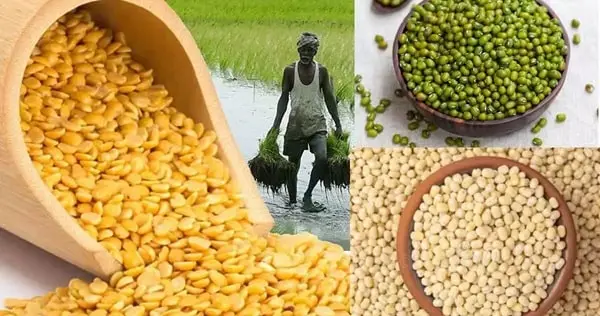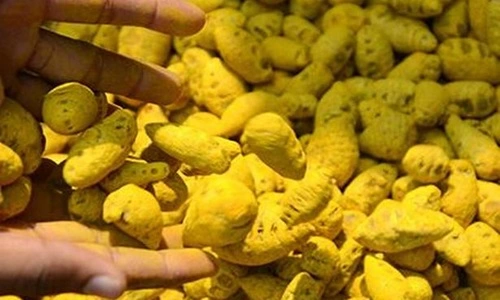India does not stop there in terms of various cultures and traditions – it is a motherland of agricultural diversity. Pulse is one of the most significant branches of the Indian agro industry since it serves the diet requirements of millions of people around the country. In 2024, the whole range of producing states is tagged as frontrunners in the production of rare pulse, whereas others make major contributions to the national agricultural output. Let’s look into the top five pulses-producing states poised to give India high-yielding pulses in the year 2024.

1. Rajasthan:
Being a place of barren lands and transmission of barefaced cultural history, the one which produces the most number of pulses is the leading supplier of pulses. In contrast, for those regions with arid climates, Rajasthan, for instance, is often fortunate in that it has been possible to unwrap its crop potential by utilizing improved irrigation methods and through the government’s backing. At the top end of the bean-giving states, the production of chickpeas, lentils, and moong beans is. Some states of Rajasthan scored very high when counting the top producing states of pulses in India as well as tried to make the friendly policies and farmers aware of modern agricultural practices uniform.
2. Madhya Pradesh:
A cultivation hub in Madhya Pradesh situated in the center of India, is primarily attributed to its vast land mass and its ideal environment. The state has the highest ranks in producing yellow peas, yellow peas, green gram, kidney beans, and mung beans alike. The government has been giving priority to the farming sector and providing loans, thus increasing the production of pulse which makes Madhya Pradesh the biggest pulse producer in the country.
3. Maharashtra:
Interestingly, Maharashtra shows up as a significant pulse producer alongside its fast-growing urban areas and intricate cultural components. The diversity of agro-climatic zones in the state is ideal because it is possible to grow different pulses like pigeon peas, lentils, and chickpeas which to classified as one. Maharashtra has welcomed the new advanced agricultural techniques along with Central government programs such as loan cancellation and insurance introductions of harvest, which have considerably boosted pulse production in the state. Production of pulses in Maharashtra although challenged with dry spells and land fragmentation, becoming a flagship cultivator is a dichotomy.
4. Uttar Pradesh:
This place is in north India. Since the crops have soft and mushy rhizomes, the farmers of cash crops at the tropics and continental weather when the temperatures are slightly above 10 degrees remain fully active at all times and that has led to the production slows and the requested subsidies for this kind of farming. Soil degradation and water scarcity may be impeding India’s pulse development but Uttar Pradesh remains the major province to even it out.
5. Karnataka:
Despite Karnataka being popular for its ‘‘ rich green sceneries’ and ‘‘ technological progress, it leans out strikingly as the major pulses provider in India. The National government directs the plants of crops of bean castor as well as pigeon pea, lentil, and chickpea beans at the national level. As Dynamic Agricultural Research And Development assistance efforts and Environment-Friendly Planting Promotions are being continued, the production of pulses has been gradually augmented. In the face of the options which are limited land and pest invasions, Karnataka is one of the zones that still support the country’s agricultural production.
Conclusion:
The State of Rajasthan along with the other states namely Madhya Pradesh, Maharashtra, Uttar Pradesh, and Karnataka also on the list of top 5 largest pulses-producing states in India having a yearly production of the year 2024 showcase their great agricultural progress. Despite the different barriers that were faced, these states resorted to using their resources, adopted modern trends, and also got the support of the government to enable the bolstering of pulse production. While their contribution can only be said to have reinforced the agricultural economy of India the most important factor here is the provision of the essential food commodities to several millions.
FAQs:
Q1. What are the major challenges associated with state pulse production?
Ans: Weather patterns are becoming more erratic, access to water becomes more difficult, insect attacks are more numerous, soil degradation happens more frequently and land ownership is more fragmented.
Q2. What effects is government funding having on the growth of bushel production in these states?
Ans: Govt. there is various kinds of assistance including but not limited to kind of subsidies for small producers, loans, crop insurance schemes as well as projects that are focused on agriculture productivity improvement and research promotion.
Q3. Do the pulse crops in these regions have any predominant tendencies?
Ans: However, the diversification towards the use of modern agricultural approaches, environmentally friendly farming techniques, and the introduction of varietally clean pulse varieties is gaining ground today.
Q4. Which of these states makes pulse crop growing possible to meet India’s national needs?
Ans: Overall, these states remarkably account for a considerable proportion of India’s total pulse production. Thus, they help in fulfilling dietary requirements as well as providing food security for the country.

